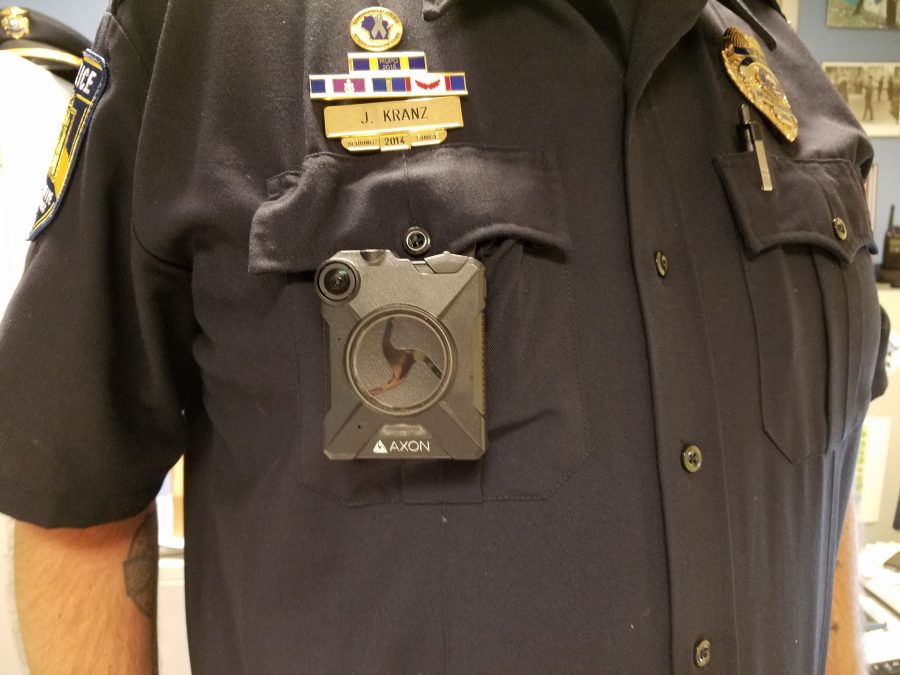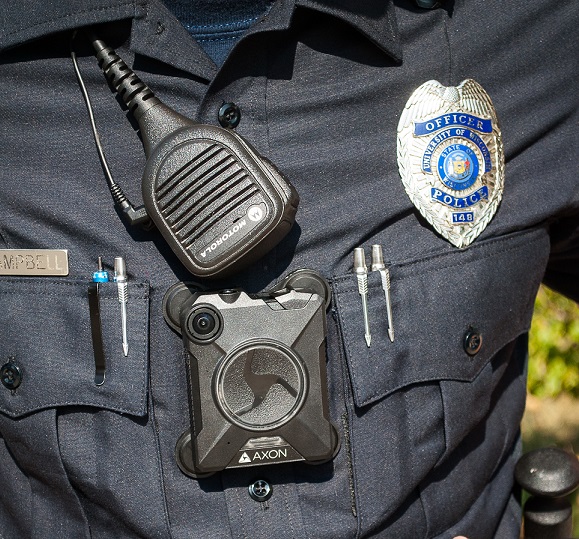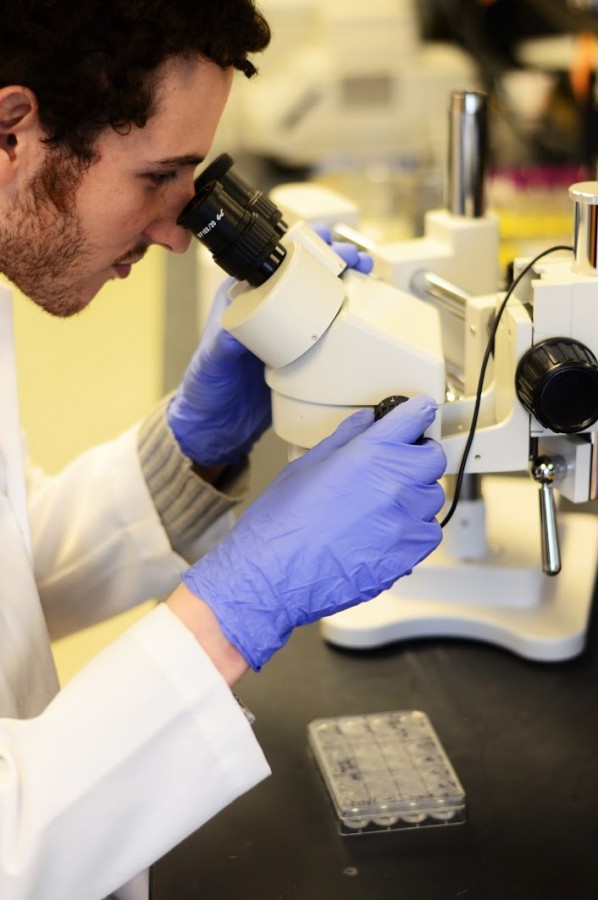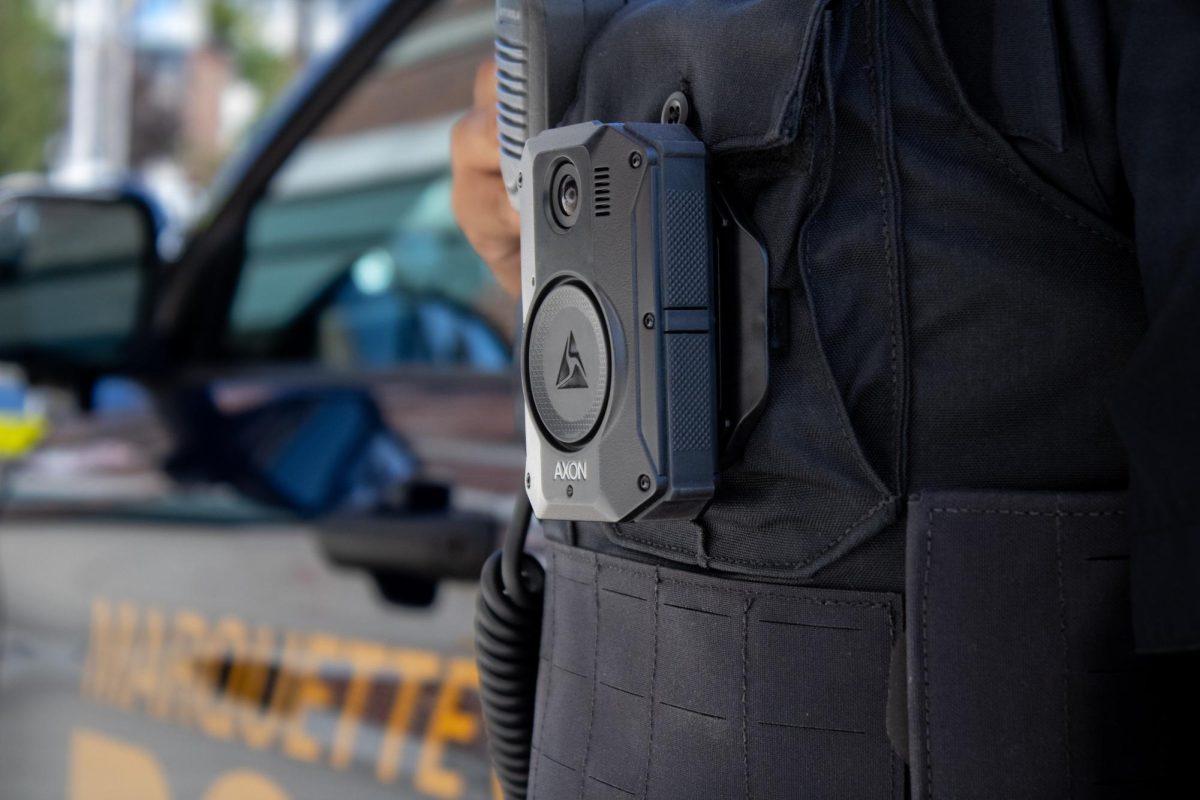The Marquette University Police Department tested two different models of body cameras throughout summer and will implement one in the next few months.
Body cameras are increasingly prevalent in police departments across the country, providing both video and audio documentation.
The two versions being tested by the police department are the Axon and the Axon Flex. The difference between these models is that the Axon attaches to the front pocket of an officer, whereas the Axon Flex is connected to the glasses an officer is wearing.
“In doing our research, we’ve seen that most of the local law enforcement agencies have gone with Taser’s version of the body camera, which is Axon,” MUPD Captain Jeff Kranz said.
Kranz said both versions of the model have their strengths and weaknesses.
“The Axon is nice because it slides right in your pocket,” he said. “However, when you go to put your arms out in front of you, it limits what you can see. The Axon Flex is nice because it gives you a high-quality shot and is right at eye level, but it tends to jar loose whenever there is a struggle. To go along with that, there are two points of disconnect on the Axon Flex, so if at any point something disconnects, you lose all video, which is definitely an issue.”
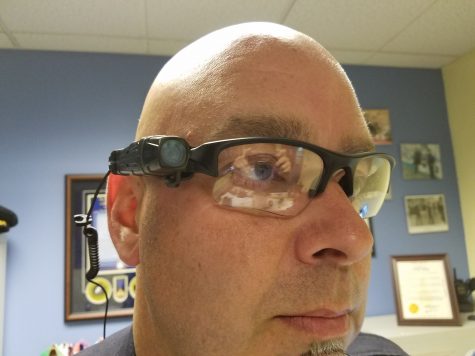
The Axon Flex body camera is worn on an officer’s eyewear.
The Axon Flex is the newer model, and Kranz said the models are similar in price. The cameras were tested for approximately two months this summer and a decision should be made soon as to which model will be most optimal for MUPD.
“I like the Axon Flex because it gives you a high-quality shot from the officer’s perspective but I also want to make sure that I am receiving video,” Kranz said. “The one thing that has been consistent is that the officers like the body camera; it justifies a lot of the decisions they make and gives them the reassurance that they can look back on the video for proof as to what happened in a particular situation.”
MUPD Sgt. Carrie Peters looks forward to a decision.
“I think the implementation of the body cameras is going to be great,” she said. “Officers have that security blanket and they can rest easy knowing that the cameras are going to capture both audio and video in any given situation.”
James Davies, a junior in the College of Communication, also believes the future implementation is a step in the right direction. “It’s good to hear that body cameras are being brought into the equation here at Marquette,” Davies said. “Officers can analyze the footage that is shot in any particular instance and it should give them some additional confidence, knowing that they have the audio and video to back up their actions.”
Regardless of which model is chosen, Kranz thinks body cameras are worth the investment.
“Whether it is the Axon or the Axon Flex, I believe that these body cameras will pay dividends for these officers on the street.”

